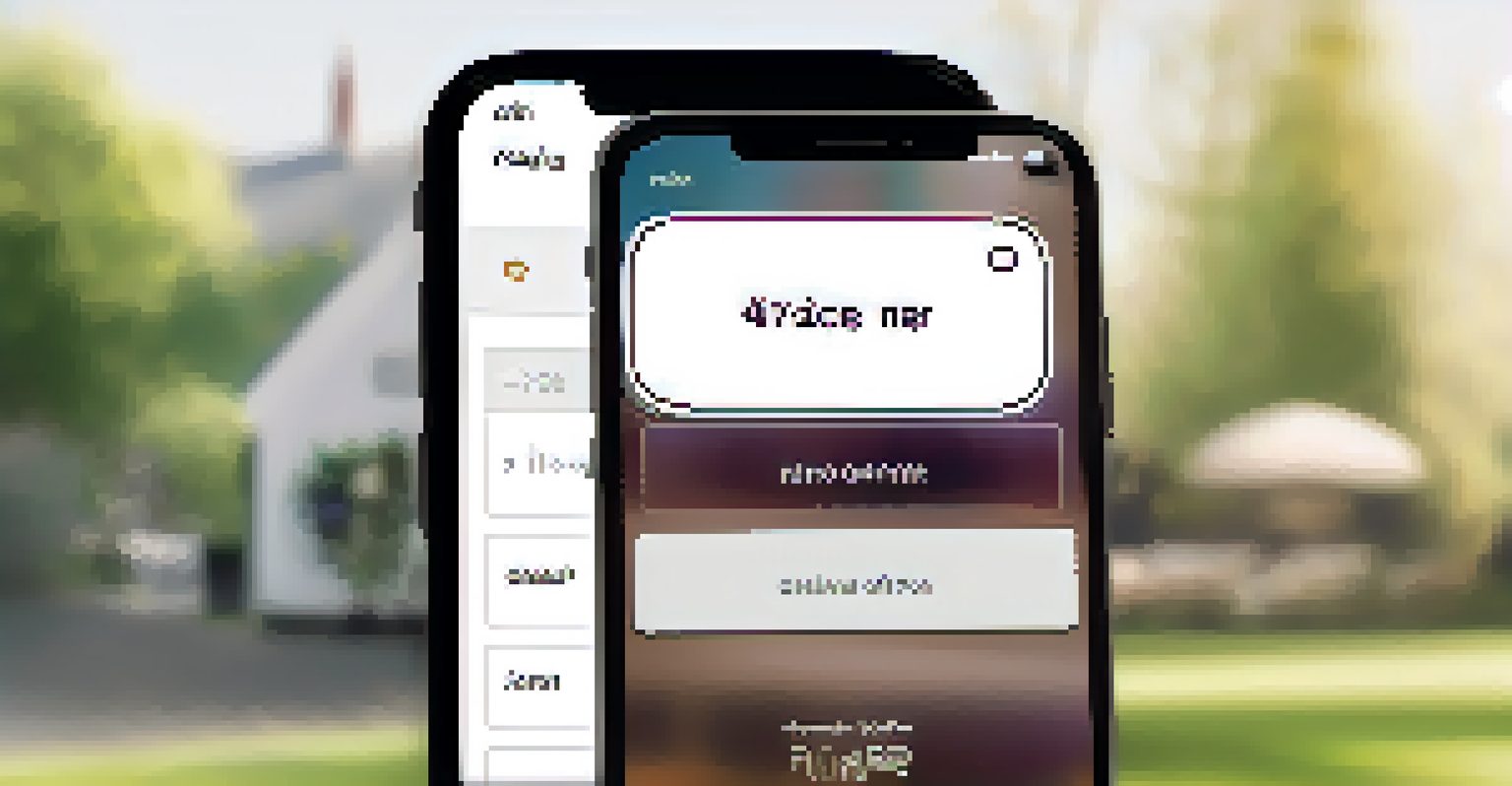Creating Effective Call-to-Actions in UX Design

Understanding the Role of CTAs in User Experience
Call-to-actions (CTAs) are crucial elements in UX design that guide users toward desired actions. They can range from 'Sign Up' buttons to 'Learn More' links, serving as signposts on a website. When designed thoughtfully, CTAs not only enhance navigation but also improve user satisfaction by making tasks easier to accomplish.
Good design is about making other designers feel like idiots because that idea wasn't theirs.
Imagine walking into a store without any signs; you'd probably feel lost, right? Similarly, CTAs provide direction in the digital space, helping users find their way. A well-placed CTA can increase engagement, leading to higher conversion rates and a better overall user experience.
Therefore, understanding how to effectively implement CTAs is key in UX design. They should be strategically placed and clearly worded to make the user's journey as seamless as possible, ensuring that the action you want them to take is both obvious and compelling.
Characteristics of Effective CTAs
Effective CTAs share several characteristics that make them stand out and drive user action. They should be visually distinct, using colors and shapes that draw the eye without clashing with the overall design. Additionally, the text should be clear and action-oriented, using verbs that prompt immediate response, like 'Get Started' or 'Join Now.'

Consider a brightly colored button on a muted background; it’s like a lighthouse guiding ships safely to shore. Similarly, your CTA should shine in its context, ensuring it’s the first thing users notice. The right combination of color and text creates a sense of urgency and excitement that encourages clicks.
Moreover, effective CTAs are concise yet persuasive. They communicate value to the user, making it clear what they will gain by clicking. This could be access to exclusive content or a discount, tapping into the user's desire for benefits that align with their needs.
Placement: Where to Position Your CTAs
The placement of CTAs on a webpage can significantly influence their effectiveness. Common positions include the top of the page, within the content, and at the end of articles or product descriptions. Each location serves a different purpose, catering to various stages of the user journey.
You can’t just place a button and call it a call-to-action. It needs to be a part of the entire experience.
For instance, a CTA at the top of a page is perfect for catching attention immediately, while those embedded within content can capitalize on a user's interest as they read. This is akin to placing snacks at eye level in a grocery store; it encourages impulse buys. Similarly, strategic placement can lead to unexpected clicks.
However, it’s essential to avoid overwhelming users with too many CTAs in one area. Instead, aim for a balanced approach that allows users to digest information before deciding on the next step. This creates a natural flow, guiding them toward action without feeling pressured.
Using A/B Testing to Optimize CTAs
A/B testing is a powerful tool in determining the effectiveness of your CTAs. By creating two versions of a CTA—say, different colors or text—you can see which one resonates more with users. This process provides valuable insights that help refine your approach, ensuring that each CTA is as effective as possible.
Think of it as a friendly competition between two flavors of ice cream; one might be a crowd favorite while the other sits untouched. Similarly, A/B testing reveals user preferences, allowing you to make data-driven decisions that enhance user engagement and conversions.
Moreover, testing should be an ongoing practice, not a one-time event. As user behaviors and trends evolve, so should your CTAs. Regularly revisiting and experimenting with different designs will keep your CTAs fresh and aligned with user expectations.
Crafting Compelling CTA Copy
The words you choose for your CTA can make or break its effectiveness. Compelling copy should be concise, persuasive, and evoke emotion. Phrases that create urgency, such as 'Limited Time Offer' or 'Don’t Miss Out,' can prompt immediate action by tapping into the fear of missing out (FOMO).
Imagine receiving an invitation to a party that promises fun and excitement versus a bland, generic invite. The lively invitation draws you in, much like an engaging CTA that sparks interest. Your copy should reflect the unique value proposition of the action you want users to take, ensuring it resonates with their desires.
Additionally, consider personalizing your CTAs for different segments of your audience. Tailoring the message to specific user needs can make the CTA feel more relevant and compelling, increasing the likelihood of engagement. This personal touch can turn a generic prompt into a persuasive invitation.
Mobile Optimization for CTAs
With the rise of mobile browsing, optimizing CTAs for mobile users has become essential. Mobile screens offer limited real estate, so CTAs need to be designed for quick access and easy interaction. This includes larger buttons and simpler language that cater to on-the-go users who may be less patient.
Think about how frustrating it is to click a tiny button on a mobile device; it’s like trying to hit a moving target. To avoid this, ensure your CTAs are thumb-friendly, meaning they should be large enough to be easily tapped without error. A smooth mobile experience keeps users engaged and more likely to convert.
Additionally, consider the context in which users access your site on mobile. Users may be looking for quick information or immediate actions, so CTAs should align with those intentions. This adaptation can significantly enhance user experience and lead to higher conversion rates.
Analyzing CTA Performance and Iterating
Once your CTAs are live, analyzing their performance is crucial to understanding their impact. Use analytics tools to track metrics like click-through rates, conversion rates, and user behavior. This data provides insights into what’s working and what needs adjustment.
Much like a chef tasting their dish during cooking, monitoring CTA performance allows for fine-tuning the user experience. If a particular CTA isn’t performing well, it may be time to reevaluate its design, placement, or wording. Continuous improvement ensures your CTAs remain effective and aligned with user needs.

Furthermore, don’t shy away from gathering user feedback. Direct insights from users can uncover issues you might not see in data alone. This collaborative approach can lead to an even more refined user experience, making your CTAs not just effective, but truly engaging.